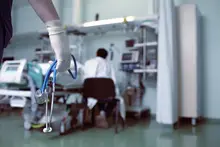5 New Technologies That Might Reduce Medical Mistakes

New York City, NY top attorney, handles medical malpractice, wrongful death, doctors errors cases, airline injuries & death, MTA, bus accidents, and construction cases. Attorney Jonathan C. Reiter consistently delivers results.
Medical errors are the third leading cause of death in the United States, outpacing everything but cancer and heart disease. According to a study published in the British Medical Journal, medical mistakes cause over 250,000 fatalities in the U.S. every year.
There are many types of medical errors, including medication mistakes, misdiagnoses, hospital-acquired infections, wrong-site surgery, and unnecessary treatment. Unfortunately, many patients sense something is wrong but get brushed off by their doctor or outright ignored when they seek help.
To reduce the number of medical mistakes, many hospitals and other health care institutions and facilities are turning to technology. Here are five innovative technologies that may help lower the number of medical errors.
Table of Contents
Sponge Detection Systems
Forgotten sponges are a leading cause of medical mistakes. During the average surgery, doctors use sponges — sometimes dozens of them — to control bleeding and allow them to see the area they’re working on more clearly. When a sponge is left behind, and the patient is closed up, however, it can cause pain, infection, and even death.
A new technology is trying to eliminate forgotten sponges by using radio frequencies. The radio frequency can detect the presence of sponges, hopefully ensuring that doctors and surgical techs account for all sponges at the conclusion of the surgery.
While the technology has been approved by the Food and Drug Administration (FDA), researchers say they can’t use it at present in patients who have cardiac implantable electronic devices (pacemakers), as the radio signals might interfere with the cardiac device’s function.
Iris Scan Authentication
Iris scan technology may sound like something out a science fiction movie, but it is very real and already being used in operating rooms. The goal is to reduce the risk of a patient mix-up by scanning a patient’s iris for identification purposes prior to surgery. If the iris information matches the patient’s record, doctors can proceed with the operation without worrying that they’re operating on the wrong person.
Adoption of Electronic Health Records
If you’re of a certain age, you probably remember walking into your doctor’s office and seeing big shelves filled with patient records decorated with colorful chart tabs. In fact, you can still see this sort of chart organization system in physician offices that haven’t switched to electronic health records (often abbreviated EHR).
By switching to electronic health records, doctors can more easily share a patient’s health history, including drug interactions and allergies, with other health providers. Digital records also help eliminate the human error that can happen when health professionals rely on paper and their own handwritten notes.
According to the Office of the National Coordinator for Health Information Technology, over 90 percent of hospitals in the U.S. are using “meaningfully certified health IT.”
Computerized Physician Orders
It’s a stereotype that doctors have horrible handwriting. While there are certainly physicians out there who won a handwriting award or two in school, talk to any nurse or health administrator, and they’ll tell you the stereotype is well-earned.
Relying on paper prescriptions and handwritten physician orders can result in serious medical mistakes, including medication mix-ups. Many medications have similar names but treat completely different conditions. Computerized order systems include warnings and alerts that flag potential problem areas, such as a medication that sounds similar to another or a patient allergy.
Another advantage of computerized order systems is the software typically requires health care providers to fill in all fields. This software helps create a more comprehensive record, which hopefully cuts down on medical errors that can lead to serious injury or even death.
Bar Code Medication Administration
Medication errors are a leading cause of medical malpractice. As a patient, it’s important to always check your prescription before taking any kind of medication. However, patients don’t always know the difference between one drug or another. Understandably, most people trust their doctor and pharmacist to dispense drugs that are safe and appropriate.
However, medical mistakes still happen. Furthermore, patients who are in the hospital may not always be in a position to ask questions about the medications they’re being given. Bar code medication administration procedures work by giving each patient a wristband or other identifying device embedded with a bar code that is unique to the patient.
When a doctor or nurse dispenses a medication, they scan the bar code to make sure they have the correct patient and that a doctor has ordered the particular medication they are about to dispense. This process helps health professionals match the bar code information with the type and amount of medication.
If you have been the victim of a medical mistake, you may be entitled to compensation. You may wish to speak to a New York City medical malpractice lawyer about your case.
Media Contact:
NYC Medical Malpractice Attorney Jonathan C. Reiter
T: 212-736-0979
Sources:
- https://www.npr.org/sections/health-shots/2016/05/03/476636183/death-certificates-undercount-toll-of-medical-errors
- http://www.modernhealthcare.com/article/20160718/blog/160719920
- https://clinicaltrials.gov/ct2/show/NCT02111980
- https://dashboard.healthit.gov/quickstats/quickstats.php
***ATTORNEY ADVERTISING***
Prior results cannot and do not guarantee or predict a similar outcome with respect to any future case. Recoveries always depend upon the facts and circumstances of each case, the injuries suffered, damages incurred, and the responsibility of those involved

